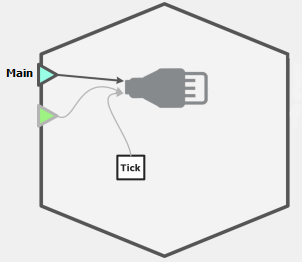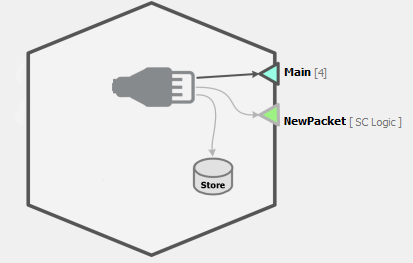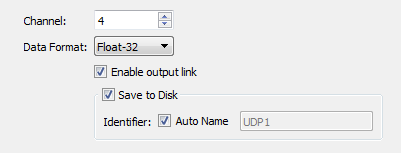RZ-UDP Interface
The UDP interface can send and/or receive single or multi-channel data UDP packets from the Ethernet port labeled "UDP" on the back of the physical RZ device.
In the Rig and in the Processing Tree, the UDP functionality is split into two device objects, one for sending data (UDPSend) and one for receiving data (UDPRecv).
See the RZUDP Programming Guide for information on communicating with the RZ-UDP interface from custom applications like MATLAB and Python.
Adding UDP to your Rig and Processing Tree
The UDPSend and UDPRecv aren't added to the rig automatically.
To add them:
-
Click Menu then Edit Rig.
-
In the Rig Editor, right-click your system's RZ processor, then click Add UDPSend or Add UDPRecv.
-
Click OK to close the Rig Editor and update the Processing Tree.
UDPSend
 |
| UDPSend Block Diagram |
UDPSend sends UDP packets out the RZ to external devices. You can select the source and range of channels from the block diagram drop-down menu, or drag the UDPSend icon in the Processing Tree and drop it on a source gizmo.
UDPSend Options
 |
| Send to UDP Options |
You can set the time period for triggering and choose either an internal real-time clock, or a secondary gizmo input as the trigger source.
UDPRecv
 |
| UDPRecv Block diagram |
UDPRecv receives data packets through the UDP interface from an external device and makes them available for further real-time processing.
UDPRecv Options
 |
| Receive from UDP Options |
You can choose the number of expected channels in the incoming UDP packets and select the data type from a drop down list, so that the RZ device knows how to convert the received bits into the correct data source output.
You can select the Enable output link check box to make the received packet and timing signal data source outputs available to use with other gizmos.
Select the Save to Disk check box to store the received packet in the data tank as a timestamped event.
See the UDP section of the System 3 Manual for more information about UDP operations.